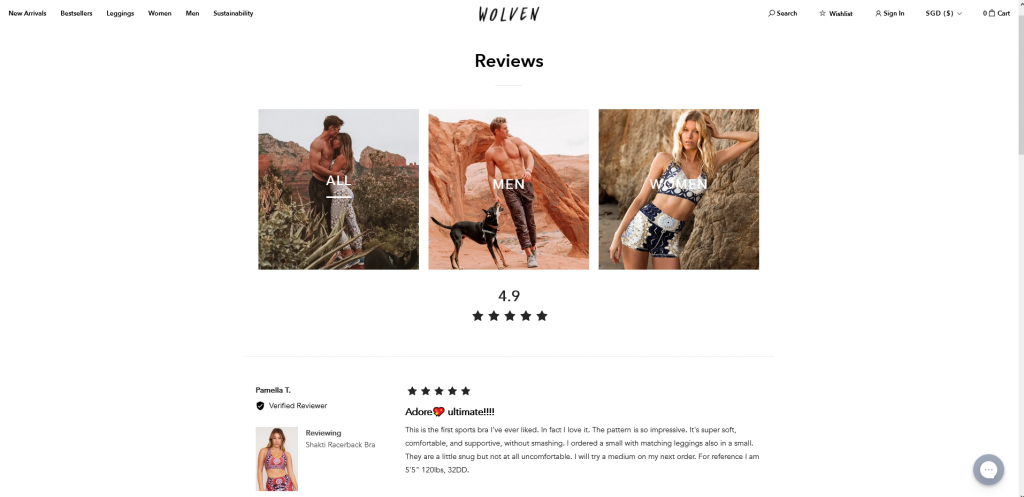How To Use Reviews To Boost SEO

Kelsey Clutter

April Partner Blog
Product reviews and SEO can go hand in hand – if you know how to make them work hard for you. Learn more about leveraging customer reviews for SEO.
When it comes to increasing your eCommerce store’s SEO, customer reviews pack a powerful punch. In fact, when it comes to the way Google displays search results, online reviews are estimated to make up 10% of the criteria.
Why are customer reviews and SEO so closely linked?
For a start, they open a channel for more freely generated and keyword-rich content to flow organically to your site. Even a bad review is likely to be packed with keywords.
Not only does this lead to higher Search Engine Results Page (SERP) positions — you’re also likely to experience a higher CTR thanks to more refined user intent.
Additionally, interacting with customers by responding to reviews helps show search engines that your content is regularly updated, and more likely to be relevant and helpful.
How to Use Reviews to Improve SEO
Create a dedicated reviews page
A huge 93% of customers will read online reviews before deciding to purchase a product. Make sure that customers starting their journey with a search targeting reviews relating to your brand or product find exactly what they’re looking for.
As well as including reviews at relevant points throughout your store, when you include a dedicated reviews page within the architecture of your eCommerce store, you’re providing a clear destination for their online searches.
Reviews naturally attract the kind of long-tail keywords that your customers will be searching for. A dedicated reviews page helps capture this highly qualified and intentional traffic.
You should aim for:
- a clear, single-focus page, given prominent position within your store’s structure
- SEO-optimization for keywords around product reviews
- a clearly signposted user journey to assist product discovery
- appealing, uncluttered design that puts user-generated content (UGC) in the spotlight
Wolven Threads provide a great example of this tactic in action. Their well-structured and organized reviews page sits within the main body of their brand website, ranking at the top of SERPs for the appropriate keywords.

User journey has been well considered, and visitors to this page can easily dive in to reviews filtered by gender to start exploring the products most relevant to them.
Add Google Rich Snippets to your product listings
Use Rich Snippets to make it easy for your eCommerce store to be read and understood by Google as it is indexed.
These enhance the way your product is displayed on SERPs, going beyond title tag, meta description and URL.
The result? Results are more informative and appealing, which should lead to better CTR.
Structuring your review data in this way has helped ensure that those all-important golden stars appear alongside your product when displayed on SERPs and Google Shopping.
A star rating can really help your product stand out from the competition, and they’re a great visual enhancement to any product listing.
At the end of 2020, Google made some changes to the way that these are calculated, so do a little research into the best way to insert review markup for your particular product or service.
Respond to Customer Reviews
It’s no secret — search engines love pages with fresh, relevant content.
By responding promptly and appropriately to your customers’ reviews, you’re doing more than enhancing customer experience.
You’re also making sure your site is regularly updated, telling Google that it’s more likely to be accurate and helpful. This is SEO gold dust, especially for local SEO.
Google’s SEO algorithms are always being fine tuned, but the platform actively encourages you to respond to reviews.
As well as keeping your page copy refreshed, review responses are a great way to sprinkle a steady stream of highly relevant, long-tail keywords and phrases throughout your site.

You should aim to:
- reply at an appropriate time
- avoid canned responses — instead, show you care with a little personalization
- reinforce your brand positioning
- include SEO-friendly keywords
How to Collect Reviews for SEO
With product reviews bringing so many SEO benefits, brands need a strategy to maximize the number that their customers are leaving.
This is where working with specialist partners like Okendo can help.
Automating the whole process of review collection (for example, through post-purchase email sequences) means that your customers get a well-crafted and perfectly timed request, boosting the chances of their cooperation.
As well as enabling you to collect more reviews, Okendo helps you make better use of them in your multichannel marketing by assisting with their display for enhanced search listings on Google, from Rich Snippets through to Product Listing Ads and Seller Ratings.
Best Practices for Collecting Reviews
Wondering how to ask customers for reviews?
It’s important to aim for quality and quantity. In addition to making sure your review requests hit inboxes at just the right time, there are a few other ways you can boost your success.
Offering rewards (for example, a discount code to be used against future purchases) for the inclusion of additional media in a review (e.g. a customer photo or video) can really ramp up the variety of UGC your reviews pull in.
And, tying customer support into the process ensures timely interactions, superb customer experience and the chance to publicly showcase helpful, active problem resolution. This is a great way to turn a negative experience into a positive outcome!
Ready to Boost Your SEO Through Product Reviews?
With so much to be gained, it pays to put effort into maximizing the positive impact that product reviews can have on your eCommerce store’s SEO.
By putting a few of the tips recommended in this article into place, you’ll be seeing the benefits on rankings and richer results in no time.









